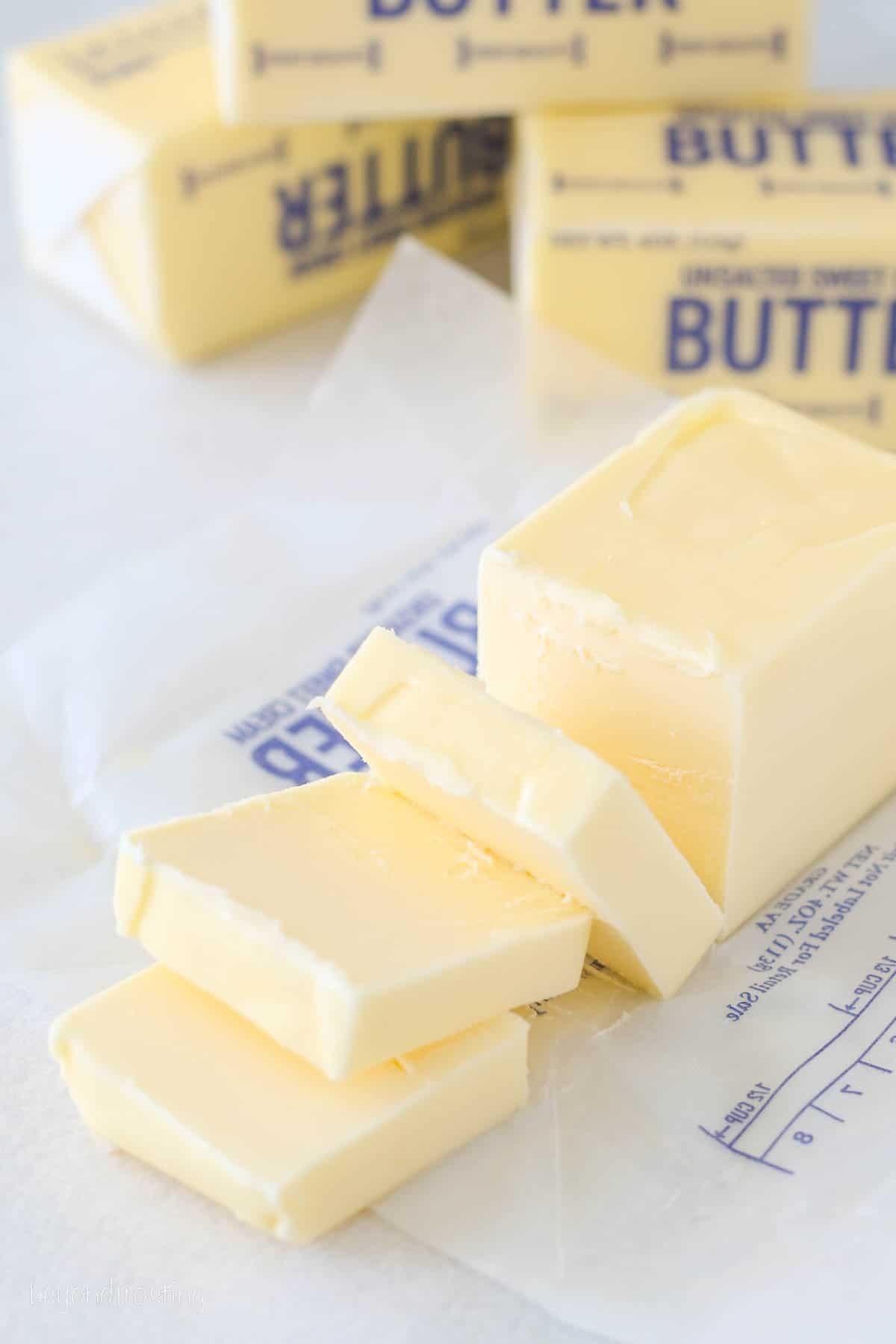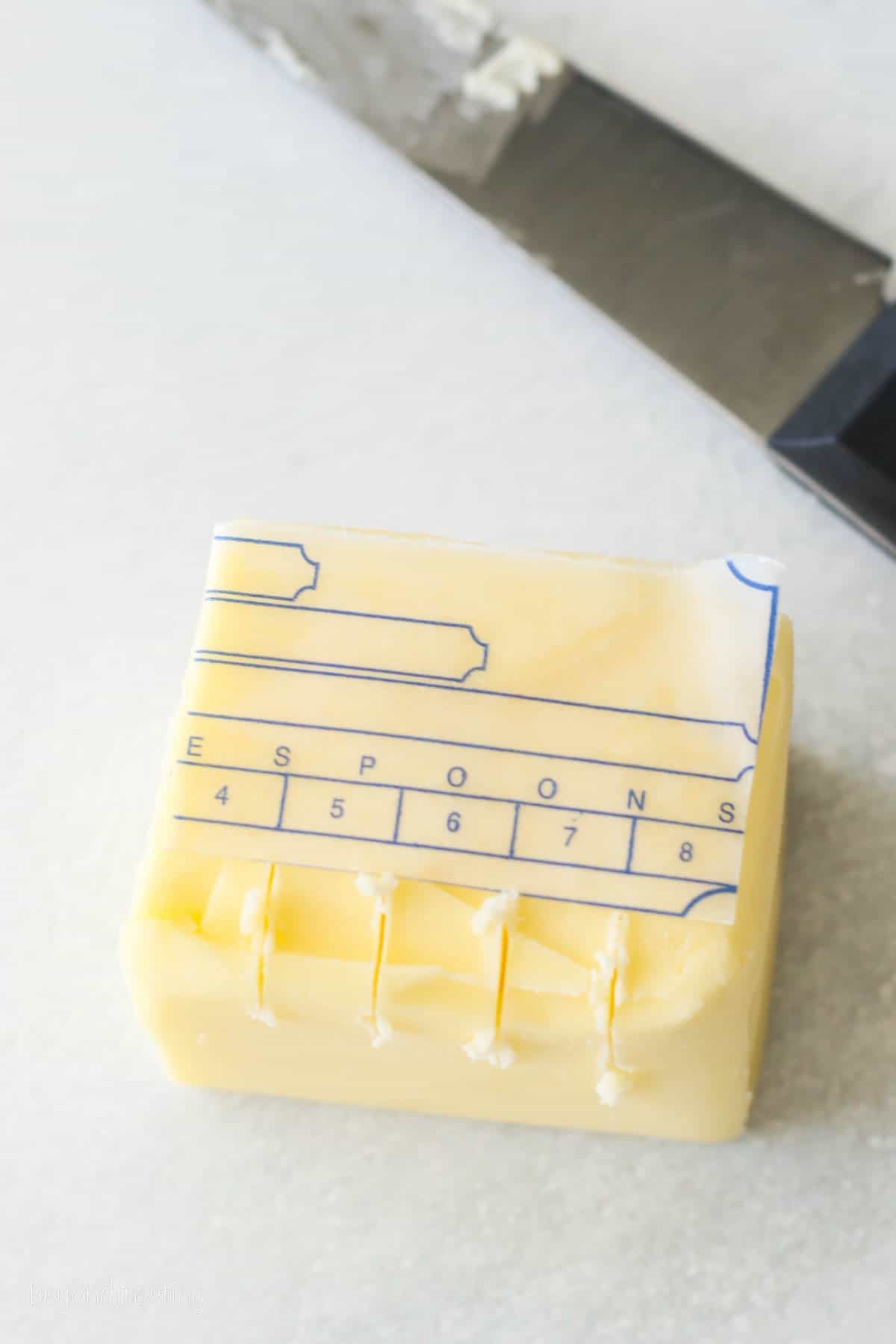When you’re in the midst of baking, precise measurements can be the difference between a culinary triumph and a baking blunder. Understanding butter measurements, especially how many tablespoons are in a stick of butter, is crucial for recipe success. Let’s unravel the mystery of butter measurements so you can bake and cook with confidence!
Decoding Butter Measurements: Sticks, Tablespoons, and More
In both cooking and baking, accuracy in measurements often dictates the outcome, especially in baking where ratios are critical. While cooking allows for more improvisation, baking usually demands precision. Butter, a staple in many recipes, requires careful measurement. Recipes might specify butter in sticks, half-sticks, or even fractions of sticks, which can be confusing if you’re working with a bulk block of butter or need smaller quantities.
While using a kitchen scale to weigh butter is the gold standard for accuracy, especially in baking, understanding tablespoon measurements is incredibly practical for everyday cooking and when a scale isn’t available. So, let’s explore the essential questions: How much does butter weigh? And most importantly, how many tablespoons are in a stick of butter? We’ll delve into the world of butter measurements to equip you with the knowledge for perfect baking results every time.
What Exactly is a Stick of Butter? A Unit of Measure Explained
Interestingly, “a stick of butter” isn’t just a physical description; in the United States, it’s a standardized unit of measurement, particularly in baking. Butter is commonly sold in pre-portioned rectangular packages designed for easy measuring. These packages contain sticks of butter, available in two primary sizes: half-sticks and full sticks. In the US standard, a full stick of butter is equivalent to ½ cup, while a half-stick equals ¼ cup.
Ideally, if a recipe calls for one stick, you could simply use the entire stick. However, complications arise when recipes require fractions of sticks or when converting from other butter measurements. This is where knowing the tablespoon conversion or weighing becomes invaluable. Using sticks directly can be limiting, especially when accuracy is paramount in baking.
The Pitfalls of Relying Solely on Butter Stick Packaging
To highlight the inconsistency of stick measurements, an experiment was conducted cutting a pound of butter into what should be tablespoon-sized pieces. Out of 32 attempts, only 6 were accurately measured tablespoons! This illustrates the potential for error when relying on estimations or visual cues alone.
Adding to the complexity, not all butter is packaged or measured in “sticks,” especially butter from outside the US. The “stick of butter” measurement, as understood in the United States, might not translate directly in other countries.
Furthermore, relying on the markings on butter wrappers can be surprisingly unreliable. As seen in the image above, the measurement markings are not consistently placed across different sticks of butter. Unless a recipe specifically calls for a full ½ cup (one stick) of butter, weighing your butter is the most accurate approach. For smaller quantities or when precision is key, converting to tablespoons is also a reliable method.
Mastering Butter Measurement: Sticks, Metric, Cups, and Tablespoons
Depending on the recipe’s demands, you have several options for measuring butter, each with varying degrees of accuracy:
- Sticks: Using whole or half sticks is convenient when recipes call for these quantities. Many butter sticks feature markings on the packaging to guide cutting for smaller amounts. While not always perfectly accurate, these markings can be helpful. Tips for accurate cutting are discussed below.
- Metric (grams): Weighing butter with a kitchen scale offers the highest level of accuracy. In metric measurements, one stick of butter (½ cup) weighs 113 grams. For precise baking, especially in recipes sensitive to ingredient ratios, a scale is indispensable.
- Cups: Measuring by cups is another option. Remember, one full stick of butter equals ½ cup, and a half-stick equals ¼ cup. Using measuring cups is more accurate than relying on stick markings but less precise than weighing.
- Tablespoons: For small quantities or when you need very precise measurements, tablespoons are ideal. There are 16 tablespoons in 1 cup, meaning there are 8 tablespoons in one full stick of butter. This is a crucial conversion to remember.
So, what is the best method for measuring butter? For baking, weighing butter using a kitchen scale is undeniably the most accurate method. It eliminates guesswork and ensures consistency. However, for smaller amounts or in cooking scenarios where absolute precision isn’t critical, measuring by tablespoons is a practical and efficient alternative.
This handy kitchen scale is my most frequently used baking tool, and it’s also very affordable! This lightweight digital scale takes up minimal counter space.
The Key Conversion: How Many Tablespoons in a Stick of Butter?
Having quick conversions at your fingertips is incredibly useful when measuring butter in tablespoons. Here are the essential conversions to keep in mind:
- 1 full stick of butter = 8 tablespoons (½ cup)
- 1 half stick of butter = 4 tablespoons (¼ cup)
For more detailed conversions, refer to this handy butter measurement chart:
| Tablespoons (Tbsp) | Cups | Sticks of Butter |
|---|---|---|
| 16 | 1 | 2 full sticks |
| 12 | 3/4 | 1 ½ full sticks |
| 8 | 1/2 | 1 full stick |
| 5 + 1 teaspoon | 1/3 | 2/3 stick |
| 4 | 1/4 | 1/2 stick |
| 2 | 1/8 | 1/4 stick |
| 1 | 1/16 | 1/8 stick |



Remember that these measurements apply to solid butter and serve as a guideline. Exact measurements can vary slightly depending on the type of butter. Notably, melted butter measures differently than solid butter. For instance, 1 cup of melted butter is equivalent to 2 cups of solid butter due to volume changes upon melting.
Butter Weight Conversions for Accuracy
If a recipe calls for “1 stick of butter” but you don’t have sticks readily available, converting to weight or tablespoons ensures you use the correct amount. Here are some useful butter weight conversions:
- 1 cup of butter = 8 ounces = 226g = 16 tablespoons
- ½ cup of butter = 4 ounces = 113g = 8 tablespoons
- 1 tablespoon of butter = 0.5 ounces = 14g
Cutting Butter Sticks Precisely: Tips and Tricks
When a food scale isn’t available, butter stick packaging often includes lines or markings to indicate where to cut for common fractions like ½, ¼, or ⅓ cup. These markings are your best guide in a pinch. Counting the lines on the butter stick wrapper is the most straightforward way to determine where to cut.
For the best results, always use a sharp knife. Score the butter along the wrapper markings before making a clean, straight cut downwards.
Let’s illustrate with an example: If a recipe requires ⅓ cup of butter, and you’re using butter sticks, this equates to ⅔ of a stick. If your butter stick has three visible lines, count two lines from one end and cut. If there are a different number of lines, divide the total lines by 3 to find the increment representing ⅓, then count accordingly to locate the ⅔ mark.
Explore More Baking Conversions and Guides
Mastering butter measurements is just one step towards baking perfection. Explore further baking conversions and tutorials to elevate your baking skills and ensure every recipe is a success!
